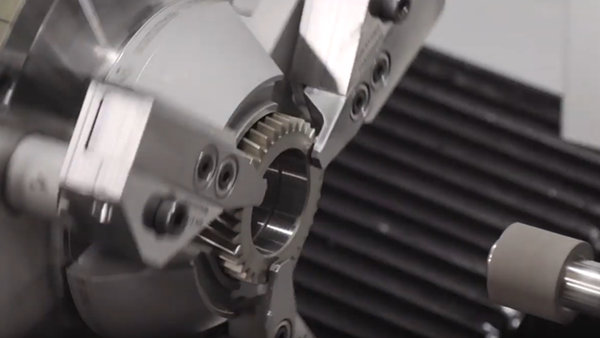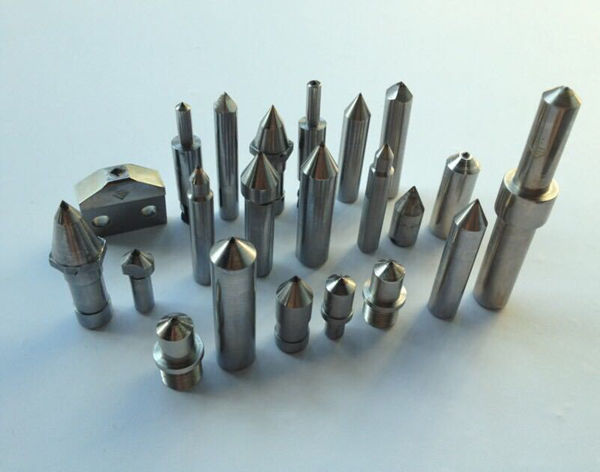Bearing grinding knowledge: the secret of successful grinding wheel dressing
The key factors that can maximize the grinding performance of grinding wheels are good shaping and sharpening tools (commonly known as dressing) and skilled dressing skills. In fact, an operator with a high quality dressing tool and a good knowledge of dressing the grinding wheel can always maintain a high grinding performance of the wheel. Instead of just buying the so-called good grinding wheel. This is very important because the workshop cannot be equipped with special grinding wheels for everyone.

Sharpening is a process of sharpening the grinding grains of super hard grinding wheel. In this process, it is necessary to remove the binder between the grinding grains and the abrasive grains of the blunt grinding wheel, so that the abrasive grains of the grinding wheel with strong grinding performance can protrude beyond the binder and form a sharp cutting edge. Sharpening must also remove tiny materials from the pores on the surface of the grinding wheel to prevent the grinding force acting on the wheel from increasing, which will cause vibration and cause burns on the surface of the parts.

Without proper sharpening, even the best grinding wheel cannot achieve the high quality and dimensional consistency of the machined parts. In fact, when you invest in high quality grinding wheels, it is important to trim them well in order to achieve high grinding performance.
The shaping can be said to be a part of the preparation of the grinding wheel. For the super hard abrasive grinding wheel, the two processes are carried out separately. The grinding wheel is first shaped. In grinding with super hard abrasive wheel, shaping is carried out by using shaping tool or rolling wheel. Sharpening is usually done by using a ceramic binder dressing rod. After the shaping is completed, the grinding wheel is sharpened.
It is important to ensure that the spindle bearing is kept at a certain temperature (such as the normal grinding condition of the grinding wheel) before the grinding wheel includes trimming and sharpening. This avoids damage to the geometry of the parts and abnormal wear of the grinding wheel and dressing tools. Finishing tools must be handled with care, as they are generally made of hard, wear-resistant but brittle diamond materials, and are very sensitive to small cracks and breakage caused by minor collisions and forces.
Because a diamond shaper is itself a cutting tool, it needs to be very sharp. Dressing the surface of a grinding wheel with a blunt dressing tool will blunt the wheel. To maintain a high quality and sharp diamond dressing tool, a single point or tapered dressing tool needs to be rotated in 1/8 of a circle at regular intervals. The number of rotations can be determined according to the dressing conditions, at least once a day according to experience. For chisel heads and shaped dressing tools, it is generally required to rotate 180° once before they are blunt.
Most cylindrical grinders place parts and grinding wheels on a horizontal line. The highest point of the external circle of the part and the highest point of the external circle of the grinding wheel are called the part/grinding wheel contact point. The diamond dressing tool should trim the grinding wheel as close as possible to the part/grinding wheel contact point. For the grinding wheel of the internal grinder, it is more important to trim the diamond dressing tool near the highest point of the outer circle of the grinding wheel (that is, the part/grinding wheel contact point during the grinding hole).
There always seems to be a temptation to opt for more depth in order to reduce the finishing time. This is a very wrong idea. The grinding wheel must be dressed at the most suitable cutting depth. Choosing too deep a cut will result in a high cutting temperature, a decrease in the service life of the dresser, and the removal of the useful layer of the grinding wheel. The end result is damage to both the dresser and the grinding wheel, which is counterproductive.
The best amount of dressing is to be able to restore the geometry of the grinding wheel and produce a good grinding edge after several repairs.
Using a single point of dressing tool, should be in 10 to 15 o axis Angle contact grinding wheel diameter direction. This will lead to a single point of dressing tools in the regular rotation, produce a sharpening effect.
With multipoint contact dressing tools don’t need to tilt the Angle. Instead of using dressing tool of the entire face and the grinding wheel surface contact.
